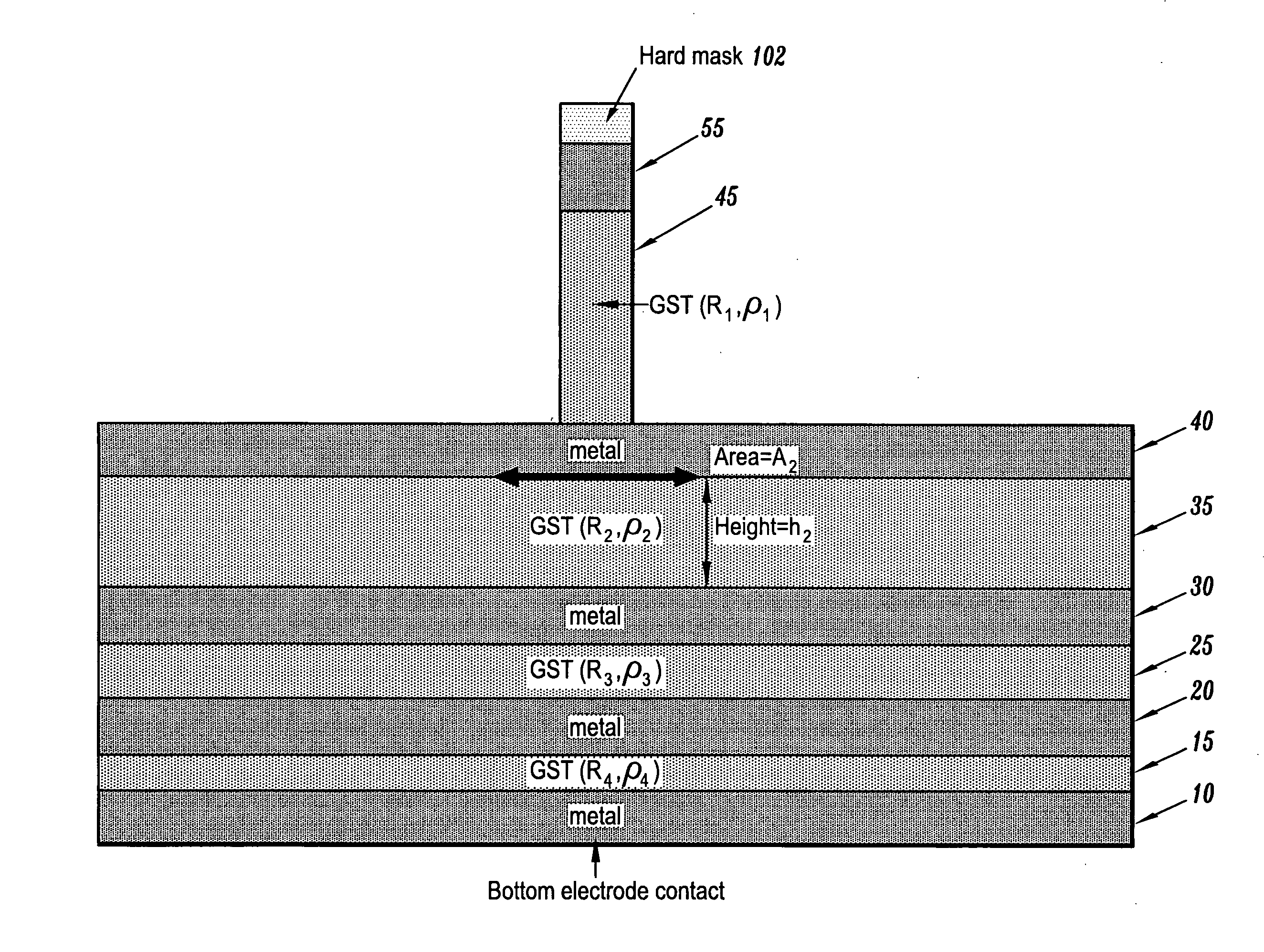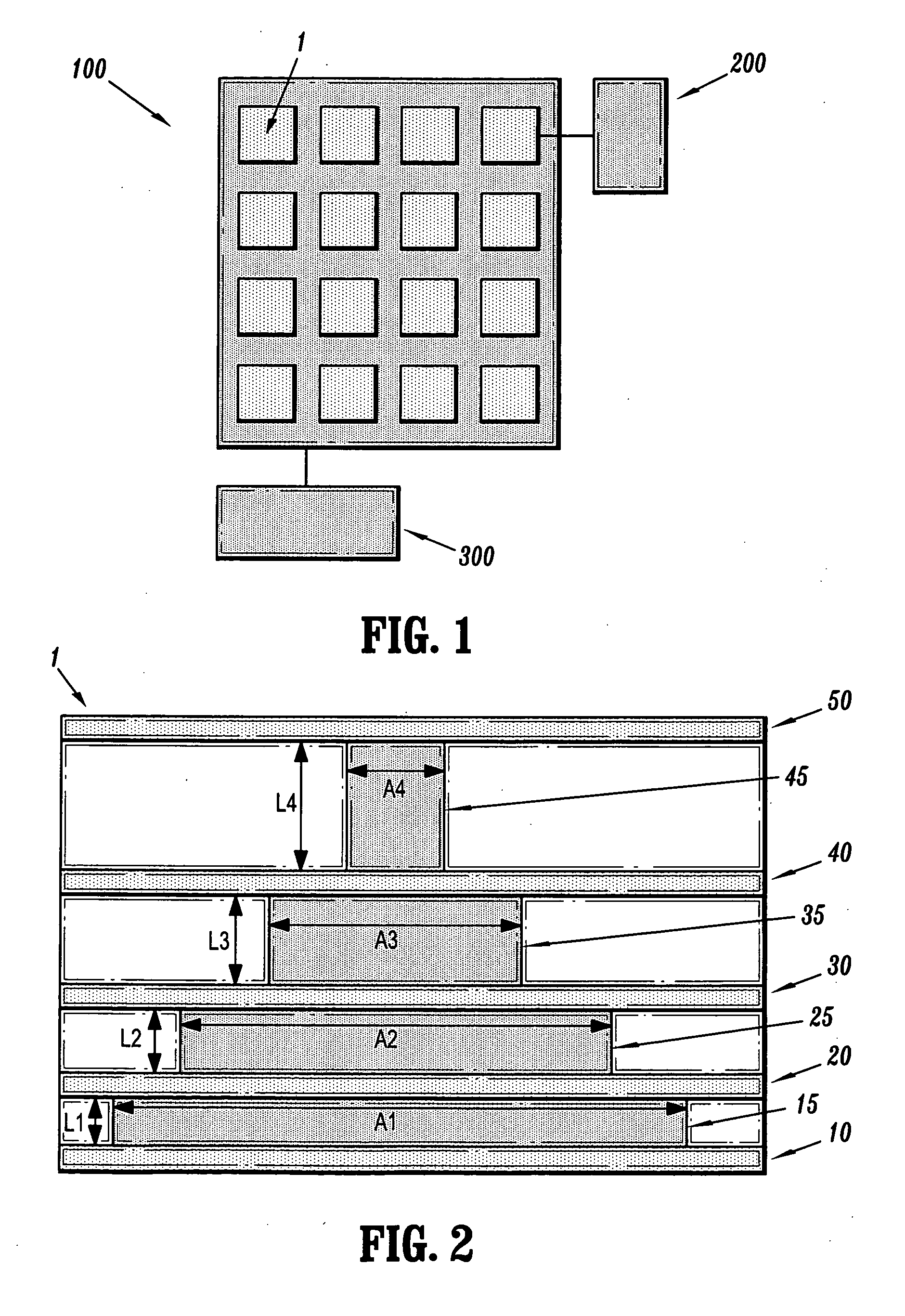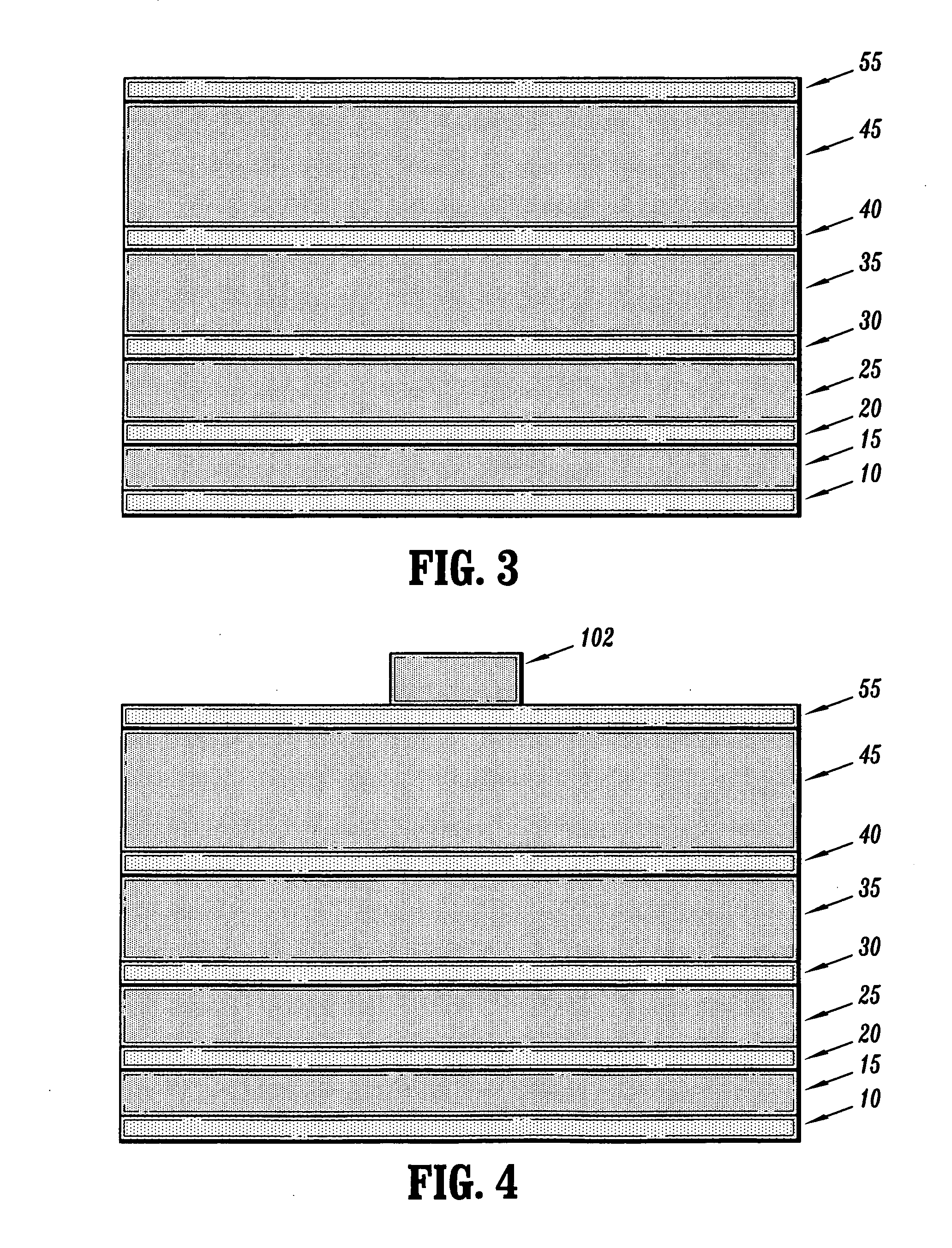Multi-bit phase change memory cell and multi-bit phase change memory including the same, method of forming a multi-bit phase change memory, and method of programming a multi-bit phase change memory
- Summary
- Abstract
- Description
- Claims
- Application Information
AI Technical Summary
Benefits of technology
Problems solved by technology
Method used
Image
Examples
Embodiment Construction
[0025] In various exemplary embodiments, the multi-bit memory cell according to the invention includes 2n phase change material layers, where n is the number of bits per cell. Conductive layers are disposed at the top and bottom of the cell and between individual phase change material layers. Multi-bit storage in the memory cell is obtained by crystallizing various phase change material layers. The phase change material layers can be crystallized by resistive heating of the phase change material layers.
[0026]FIG. 1 shows a multi-bit phase change memory 100 according to an exemplary embodiment of the invention. The multi-bit phase change memory includes a plurality of phase change memory cells 1 arranged in an array, a programming circuit 200, and a sensing circuit 300.
[0027]FIG. 2 is a cross-sectional view of a multi-bit memory cell used in the multi-bit phase change memory 100 according to an exemplary embodiment of the invention. The multi-bit memory cell 1 includes first throug...
PUM
| Property | Measurement | Unit |
|---|---|---|
| Electrical resistance | aaaaa | aaaaa |
| Current | aaaaa | aaaaa |
| Electrical conductor | aaaaa | aaaaa |
Abstract
Description
Claims
Application Information
 Login to View More
Login to View More - Generate Ideas
- Intellectual Property
- Life Sciences
- Materials
- Tech Scout
- Unparalleled Data Quality
- Higher Quality Content
- 60% Fewer Hallucinations
Browse by: Latest US Patents, China's latest patents, Technical Efficacy Thesaurus, Application Domain, Technology Topic, Popular Technical Reports.
© 2025 PatSnap. All rights reserved.Legal|Privacy policy|Modern Slavery Act Transparency Statement|Sitemap|About US| Contact US: help@patsnap.com



